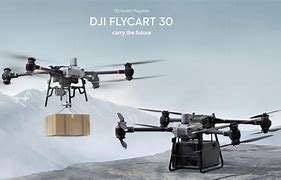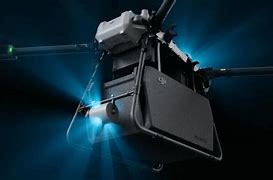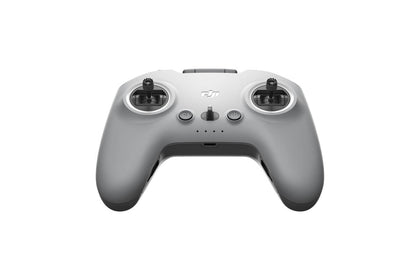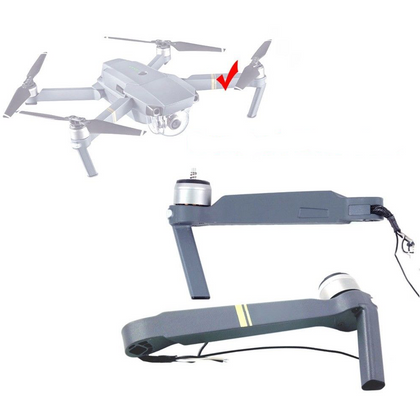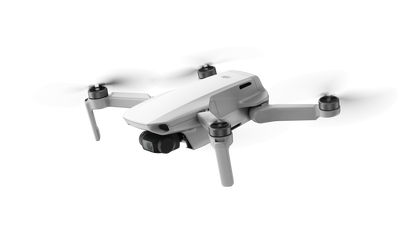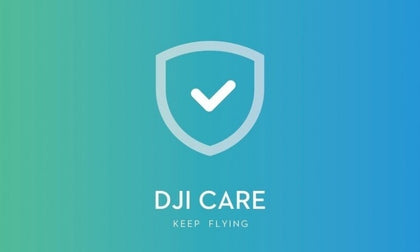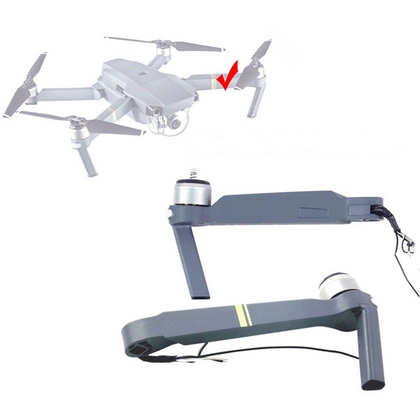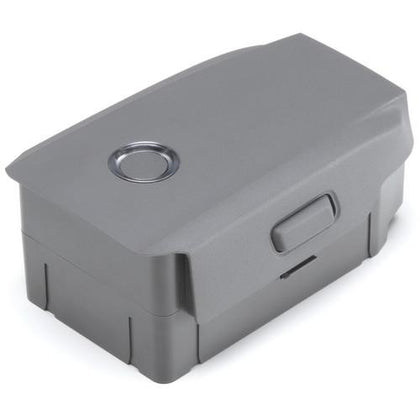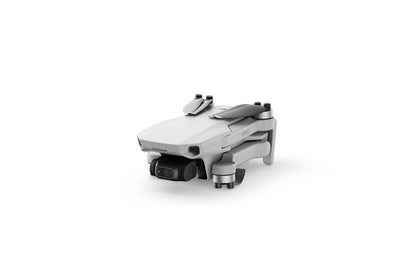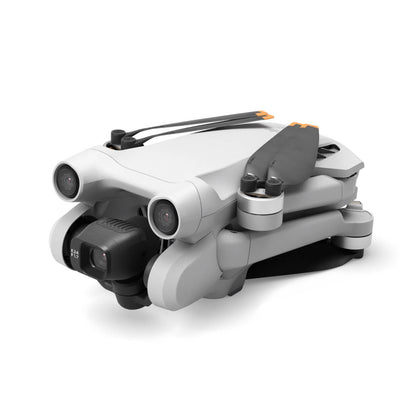DJI FlyCart 30 Delivery Drone
- Order within
DJI FlyCart 30 Delivery Drone
Rise above logistical limits with DJI FlyCart 30
A new drone has arrived to revolutionize delivery of goods, surpassing conventional logistical constraints to provide a secure, cost-effective, and streamlined air transport solution.
As a long-range heavy-duty aerial vehicle equipped with robust signal capabilities and advanced intelligence features, the DJI FlyCart 30 offers support for both Cargo mode and Winch mode.

Heavy lifter across long distances
The FlyCart 3 is designed to handle heavy payloads and cover extensive distances with remarkable efficiency.
With a max payload capacity of 30 kg on dual battery mode and 40 kg on single battery mode, it stands as a formidable heavy lifter in the drone industry.
The drone boasts an impressive 28 km flight distance without any payload and maintains a commendable 16 km flight range even when operating with full payload. It flies at a maximum speed of 20 m/s, ensuring swift and timely deliveries.
Weather the extremes
This delivery drone is built to thrive in extremes. It can reach a max flight altitude of 6,000 m and operates seamlessly across a temperature range from -20°C to 45°C (-4°F to 113°F), ensuring reliability in diverse environmental scenarios.
Additionally, its remarkable resistance to wind speeds of up to 12 m/s underscores its capability to withstand adverse weather conditions, making it a dependable choice for deliveries in a wide range of challenging environments.
Enhanced connectivity
Another standout feature of FlyCart 30 is its 20-km video transmission range with O3 technology. The inclusion of 4G enhanced video transmission further enhances connectivity and reliability, facilitating real-time monitoring and control.
The Dual Operator Mode adds a layer of flexibility to the drone's operation, allowing for collaborative control and improved precision. Complementing these features is a high-resolution FPV gimbal camera for unparalleled clarity for navigation and surveillance purposes.
Advanced safety and intelligent features
This delivery aircraft comes equipped with front and rear phased array radars, along with a dual binocular vision system, enabling intelligent multidirectional obstacle sensing. It also has a built-in ADS-B signal receiver, enhancing safety by detecting and providing warnings for nearby crewed aircraft.
For secure takeoff and landing, the drone employs a propeller rotation delay of 6 seconds and an additional verification step for landing. The incorporation of an RTK module further enhances precision for centimeter-level positioning.
In the event of an emergency, the integrated parachute can be triggered even at low altitudes, ensuring a stable drone landing and minimizing potential risks to individuals and property. The propellers also cease rotation before the parachute is deployed.
The parachute undergoes an autonomous self-check during startup, operates on an independent power source, and features both sound and light alerts.
Convenient payload configurations
Payload delivery is facilitated through either Cargo mode or Winch mode, depending on the destination requirements.
In Cargo mode, weight and center-of-gravity detection ensures balanced cargo loading for safe and stable flight.
Package delivered in Winch is transported using a retractable cable, controllable either manually or automatically. The cargo is released automatically upon landing, eliminating the need for manual detachment and ensuring a secure and accurate delivery process.

One-stop solution for aerial delivery
Software like DJI Pilot 2 and DJI DeliveryHub provide a powerful, efficient, and flexible one-stop solution for drone delivery management.
DJI Pilot 2 simplifies delivery operations by displaying real-time flight status, cargo status, and other interactive interfaces. You can check battery level, power status, and mileage in real time, and monitor the reachability of the destination point to ensure operation safety.

How DJI FlyCart 30 helps solve pain points
-
REDUCED DELIVERY COSTS
Last-mile delivery from a distribution center to the final destination is often the most expensive and logistically challenging part of the process. Drone delivery can reduce the costs associated with traditional delivery methods, such as fuel, labor, and vehicle maintenance.
Drones can efficiently cover short distances and deliver packages to remote or hard-to-reach areas.
-
DANGEROUS OPERATIONS
Drones can provide access to rural or remote areas that may be difficult & dangerous for traditional delivery services to reach, expanding the reach of lifesaving services as well as e-commerce. Thus, improving the quality of life for people in these areas.
-
FASTER DELIVERY TIME
Delivery drones fly at an average speed of 30 to 60 miles per hour, which allows them to rush critical supplies to people in disaster zones and remote, inaccessible areas. In crowded urban areas, deliveries via air routes could ease traffic congestion.
Drones have delivered vaccines and medicines to over 2,000 hospitals in Ghana, Rwanda, and the United States in hard to reach areas. Drone deliveries are up to 7x the speed of traditional automobile delivery.
-
LOW CARBON EMISSIONS
Electric drones can be more environmentally friendly than traditional delivery vehicles, reducing carbon emissions. Drones generally use rechargeable batteries allowing greater efficiency. Oftentimes, drones can significantly reduce carbon emissions.
DJI FlyCart 30 Delivery Drone
Rise above logistical limits with DJI FlyCart 30
A new drone has arrived to revolutionize delivery of goods, surpassing conventional logistical constraints to provide a secure, cost-effective, and streamlined air transport solution.
As a long-range heavy-duty aerial vehicle equipped with robust signal capabilities and advanced intelligence features, the DJI FlyCart 30 offers support for both Cargo mode and Winch mode.

Heavy lifter across long distances
The FlyCart 3 is designed to handle heavy payloads and cover extensive distances with remarkable efficiency.
With a max payload capacity of 30 kg on dual battery mode and 40 kg on single battery mode, it stands as a formidable heavy lifter in the drone industry.
The drone boasts an impressive 28 km flight distance without any payload and maintains a commendable 16 km flight range even when operating with full payload. It flies at a maximum speed of 20 m/s, ensuring swift and timely deliveries.
Weather the extremes
This delivery drone is built to thrive in extremes. It can reach a max flight altitude of 6,000 m and operates seamlessly across a temperature range from -20°C to 45°C (-4°F to 113°F), ensuring reliability in diverse environmental scenarios.
Additionally, its remarkable resistance to wind speeds of up to 12 m/s underscores its capability to withstand adverse weather conditions, making it a dependable choice for deliveries in a wide range of challenging environments.
Enhanced connectivity
Another standout feature of FlyCart 30 is its 20-km video transmission range with O3 technology. The inclusion of 4G enhanced video transmission further enhances connectivity and reliability, facilitating real-time monitoring and control.
The Dual Operator Mode adds a layer of flexibility to the drone's operation, allowing for collaborative control and improved precision. Complementing these features is a high-resolution FPV gimbal camera for unparalleled clarity for navigation and surveillance purposes.
Advanced safety and intelligent features
This delivery aircraft comes equipped with front and rear phased array radars, along with a dual binocular vision system, enabling intelligent multidirectional obstacle sensing. It also has a built-in ADS-B signal receiver, enhancing safety by detecting and providing warnings for nearby crewed aircraft.
For secure takeoff and landing, the drone employs a propeller rotation delay of 6 seconds and an additional verification step for landing. The incorporation of an RTK module further enhances precision for centimeter-level positioning.
In the event of an emergency, the integrated parachute can be triggered even at low altitudes, ensuring a stable drone landing and minimizing potential risks to individuals and property. The propellers also cease rotation before the parachute is deployed.
The parachute undergoes an autonomous self-check during startup, operates on an independent power source, and features both sound and light alerts.
Convenient payload configurations
Payload delivery is facilitated through either Cargo mode or Winch mode, depending on the destination requirements.
In Cargo mode, weight and center-of-gravity detection ensures balanced cargo loading for safe and stable flight.
Package delivered in Winch is transported using a retractable cable, controllable either manually or automatically. The cargo is released automatically upon landing, eliminating the need for manual detachment and ensuring a secure and accurate delivery process.

One-stop solution for aerial delivery
Software like DJI Pilot 2 and DJI DeliveryHub provide a powerful, efficient, and flexible one-stop solution for drone delivery management.
DJI Pilot 2 simplifies delivery operations by displaying real-time flight status, cargo status, and other interactive interfaces. You can check battery level, power status, and mileage in real time, and monitor the reachability of the destination point to ensure operation safety.

How DJI FlyCart 30 helps solve pain points
-
REDUCED DELIVERY COSTS
Last-mile delivery from a distribution center to the final destination is often the most expensive and logistically challenging part of the process. Drone delivery can reduce the costs associated with traditional delivery methods, such as fuel, labor, and vehicle maintenance.
Drones can efficiently cover short distances and deliver packages to remote or hard-to-reach areas.
-
DANGEROUS OPERATIONS
Drones can provide access to rural or remote areas that may be difficult & dangerous for traditional delivery services to reach, expanding the reach of lifesaving services as well as e-commerce. Thus, improving the quality of life for people in these areas.
-
FASTER DELIVERY TIME
Delivery drones fly at an average speed of 30 to 60 miles per hour, which allows them to rush critical supplies to people in disaster zones and remote, inaccessible areas. In crowded urban areas, deliveries via air routes could ease traffic congestion.
Drones have delivered vaccines and medicines to over 2,000 hospitals in Ghana, Rwanda, and the United States in hard to reach areas. Drone deliveries are up to 7x the speed of traditional automobile delivery.
-
LOW CARBON EMISSIONS
Electric drones can be more environmentally friendly than traditional delivery vehicles, reducing carbon emissions. Drones generally use rechargeable batteries allowing greater efficiency. Oftentimes, drones can significantly reduce carbon emissions.
Aircraft
-
Weight
-
42.5 kg (without battery)
65 kg (with two DB2000 batteries)
-
Max Takeoff Weight
- 95 kg (with cargo at sea level)
-
Max Diagonal Wheelbase
- 2200 mm
-
Dimensions
-
1590 x 1900 x 947 mm
(LxWxH) (arms unfolded, propellers folded)
2800x3085x947 mm
(LxWxH) (arms & propellers unfolded)
1115x760x1027 mm
(LxWxH) (arms & propellers folded)
-
Folding Method
- Towards body
-
Loadable Battery Quantity
- 2
-
Hovering Endurance (empty weight, with max battery capacity)
-
29 mins (dual battery mode)
15 mins (single battery mode)
*The data was collected in controlled conditions: zero altitude and a windless environment. For reference only.
-
Hovering Endurance (max weight, with max battery capacity)
-
18 mins (30 kg weight load, dual battery mode)
8 mins (40 kg weight load, single battery mode)
*The data was collected in controlled conditions: zero altitude and a windless environment. For reference only.
-
Max Flight Distance (empty weight, with max battery capacity)
-
28 km (dual battery mode)
12 km (single battery mode)
*The data was collected in controlled conditions: zero altitude and windless environment, at a constant speed of 15m/s. For reference only.
-
Max Flight Distance (max weight, with max battery capacity)
-
16 km (30 kg weight load, dual battery mode)
8 km (40 kg weight load, single battery mode)
*The data was collected in controlled conditions: zero altitude and windless environment, at a constant speed of 15 m/s. For reference only.
-
Max Flight Time (max weight, with max battery capacity)
-
18 mins (30 kg weight load, dual battery mode)
9 mins (40 kg weight load, single battery mode)
*The data was collected in controlled conditions: zero altitude and a windless environment, at a constant speed of 15 m/s. For reference only.
-
Operating Temperature
- -20° to 45° C
-
Ingress Protection Rating
- IP55
-
Hovering Accuracy (with strong GNSS signal)
-
RTK positioning enabled:
±10 cm horizontal, ±10 cm vertical
RTK positioning disabled:
±60 cm horizontal and ±30 cm vertical (radar enabled: ±10 cm)
-
RTK/GNSS Operating Frequency
-
RTK: GPS L1/L2, Galileo F1/F2, BeiDou B1I/B2I/B3I, Galieo E1/E5b, QZSS L1/L2
GNSS: GPS L1, BeiDou B1I, Galileo F1, Galieo E1, QZSS L1
-
Max Pitch Angle
- 30°
-
Max Ascent Speed
-
5 m/s
*The data was collected in controlled conditions: zero altitude and a windless environment, with a 30 kg payload. For reference only.
-
Max Descent Speed
-
3 m/s (vertical)
5 m/s (tilted)
*The data was collected in controlled conditions: zero altitude and a windless environment, with a 30 kg payload. For reference only.
-
Max Horizontal Speed
-
20 m/s
*The data was collected in controlled conditions: zero altitude and a windless environment, with a 30 kg payload, for reference only.
-
Max Flight Altitude
- 6000 m (without payload)
-
Max Wind Speed Resistance
-
12 m/s
*The data was collected in controlled conditions: zero altitude and a windless environment, with a 30 kg payload. For reference only.
Propulsion System
-
Stator Size
- 100x33 mm
-
Motor KV Value
- 48 rpm/V
-
Max Motor Power
- 4000 W/rotor
-
Propellers Material
- Carbon fiber composite
-
Propellers Diameter
- 54 inch
-
Propellers Type
- Foldable double-blade propellers
-
Main-rotor Diameter
- 1375 mm
-
Rotor Quantity
- 8
LED Light
-
Effective Illumination Distance
- 10 m
-
Illumination Mode
- 60 Hz, automatically switch on according to ambient light
DJI O3 Image Transmission
-
Model
- Pigeon (with DDR)-2T4R
-
Signal Effective Distance
-
20 km (FCC)
8 km (CE/SRRC/MIC)
*Measured with FCC compliance in unobstructed environments with typical interference. Data is for reference only. The actual transmission distance may vary depending on the environment's obstruction and interference conditions. Please pay attention to reminders in the app.
-
O3 Operating Frequency
-
2.4000 to 2.4835 GHz
5.725 to 5.850 GHz
*Some countries or regions do not support the 5.8 GHz frequency band. Please refer to local flight laws and regulations for details.
-
EIRP
-
2.400 GHz - 2.4835 GHz:
<33 dBm(FCC)
<20 dBm(CE/SRRC/MIC)
5.725 GHz - 5.850 GHz:
<33 dBm(FCC)
<30 dBm(SRRC)
<14 dBm(CE)
-
Data Security
- AES-256
-
ADS-B
- Supported
Forward and Backward Active Phased Array Radar
-
Model Number
-
RD241608RF (forward)
RD241608RB (backward)
-
Altitude Detection
- Fixed altitude range: 1.5-200 m
-
Rear Obstacle Avoidance
-
Sensible distance (rear): 1.5-50 m
FOV Forward: 360° horizontal, ±45° vertical,±45°upward
Backward: ±45° horizontal, 360° vertical
Operating conditions: Available during takeoff, landing, and ascending when an obstacle is more than 1.5 m away from the aircraft
Safe distance: 3.5 m (distance between the propeller tip and obstacle when the aircraft is hovering after braking)
Sensing direction: multi-direction
Binocular Vision System
-
FOV
- Horizontal: 90; Vertical: 106°
-
Work Environment Requirements
- Normal lighting with clearly textured surfaces
FPV Camera
-
Resolution
- 1920x1440
-
DFOV
- 149°
-
Frame Rate
- 30fps
-
Type
- Full HD FPV Single Axis Gimbal Camera
-
Fill Light
- Supported
Cargo Case
-
Dimension
- 754x472x385 mm (LxWxH)
-
Inner Space
- 573x416x305 mm (LxWxH)
-
Material
- EPP plus aluminum alloy frame
-
Weighing Feature
- Supported
-
Weight
- Approx. 3 kg
-
Load Capacity
- 0-40 kg
Parachute
-
Max Payload
- ≤ 95 kg
-
Dimension
- 300x200x120 mm (LxWxH)
-
Weight
- Approx. 2.1 kg
-
Automatic Reaction Time
- Approx. 1000 ms
-
Descending Speed
- ≤ 6 m/s (at sea level, no wind)
-
Parachute Shape
- Square
-
Material
- Nylon
-
Surface Area
- Approx. 22 ㎡
-
Minimum Opening Height
- 60 m
-
Operating Temperature
- -20° to 45° C
-
Ingress Protection Rating
- IP55
-
Mainboard Power-off Battery Life
- ≥ 1 hour
-
Memory Card Capacity
- Real-time record for 10 flights
-
Buzzar Alarm
- Supported
-
Lighting Alarm
- Supported
-
Manually Opening
- Supported
-
Automatic Opening
- Supported
Winch System (Optional)
-
Model
- A2EWI-30A
-
Dimension
- 252x195x193 mm (LxWxH)
-
Body Weight
- 2.5 kg (without clump and couple)
-
Clump Weight
- 1.9 kg
-
Couple Weight
- 0.6 kg
-
Touchdown Release Feature
- Supported
-
Payload Capacity
- 5-30 kg (dual battery)5-40 kg (single battery)
-
Cable Length
- 20 m
-
Max Retraction Speed
- 0.8 m/s
-
Operating Temperature
- -20° to 45° C
-
Ingress Protection Rating
- IP55
-
Weighing Function
- Supported
-
Cut Cable Protection
- Supported
-
Swing Control Feature
- Supported
-
Manual Operation
- Supported
-
Automatic Operation
- Supported
-
Deceleration Protection
- Supported
DJI DB2000 Intelligent Battery
-
Model
- DB2000
-
Capacity
- 38000 mAH
-
Nominal Voltage
- 52.22 V
-
Type
- 14S1P
-
Energy
- 1984.4 Wh
-
Weight
- Approx. 11.3 kg
-
Installation Method
- Plug
-
Dimension
- 316x152x279 mm (LxWxH)
-
Operating Temperature
- -20° to 45° C
-
Charging Rate
- 5 to 15° C: 1.0C15 to 45° C: 2.5C
-
Max Charging Power
- 5700 W
-
Automatic Heating Feature
- Supported (when the battery temperature is below 10° C, pressing and holding the button or turning on the drone will activate the self-heating function. When the battery temperature is below 20° C, connecting the charger to the battery will activate the self-heating function. Charging and discharging in a low-temperature environment may reduce the battery's lifespan)
DJI C8000 Intelligent Charger
-
Model
- CHX101-7000
-
Input
- 90-264 V AC
-
Output
- 42-59.92 V DC
-
Max Output Power
- 7200 W (Dual input)3600 W (Single input)
-
Output Channel Quantity
- 2
-
Protection Feature
- The feature is designed to respond to issues including overheating, overvoltage, undervoltage, short circuits, fan stalls, etc.
-
Operating Temperature
- -20° to 45° C
-
Charging Security
- Connector protection feature available
Remote Controller
-
Type
- DJI RC Plus
-
APP
- DJI Pilot 2
-
Operating Frequency
-
2.400-2.483 GHz
5.725-5.850 GHz
-
EIRP
-
2.400-2.4835 GHz:
<33 dBm(FCC)
<20 dBm(CE/SRRC/MIC)
5.725-5.850 GHz:
<33 dBm(FCC)
<23 dBm(SRRC)
<14 dBm(CE)
-
Operating Temperature
- -20° to 50° C
-
Charging Environment Temperature
- 5° to 40° C
-
Built-in Battery Life
- 3.3 hours
-
External Battery
- 2.7 hours
-
Charging Method
- Use a USB-C fast charging charger with a maximum power of no less than 65 W (maximum voltage of 20 V). A DJI portable charger is recommended.
-
Charging Time
- 2 hours with built-in battery, 2.5 hours with built-in and external battery (shutdown status according to official charging method)
-
Ingress Protection Rating
- IP54
-
Video Output Interface
- HDMI
-
Wi-Fi Protocol
- Wi-Fi 6
-
Wi-Fi Working Frequency
-
2.4000-2.4835 GHz
5.150-5.250 GHz
5.725-5.850 GHz
-
Bluetooth Protocol
- Bluetooth 5.1
-
Bluetooth Working Frequency
- 2.4000 - 2.4835 GHz
-
EIRP
- <10 dBm
-
GNSS
- GPS+Galileo+BeiDou
-
Screen
- 7.02 inch touch LCD display screen, resolution 1920*1200, brightness 1200 nits
-
Dual Operator Mode
- Supported
- 1x DJI FlyCart 30 Aircraft
- 1x Remote Controller
- 1x Remote Controller Strap
- 1x Power Cable
- 1x USB-A to USB-C Cable
- 1x USB-C to USB-C Cable
- 1x Battery Cover
- 1x DJI 100W USB-C Power Adapter
- 1x WB37 Intelligent Battery (Mounted in the remote controller)
- 1x Goggles
- Manuals (In the Box, Quick Start Guide, Disclaimer and Safety, Guidelines, & Product Certification)
- 1x Hex Key Set
- 8x Propeller Washers
- 4x Nuts
- 1x Phillips Screwdriver (PH0)
- 1x Wrench (11 mm)

